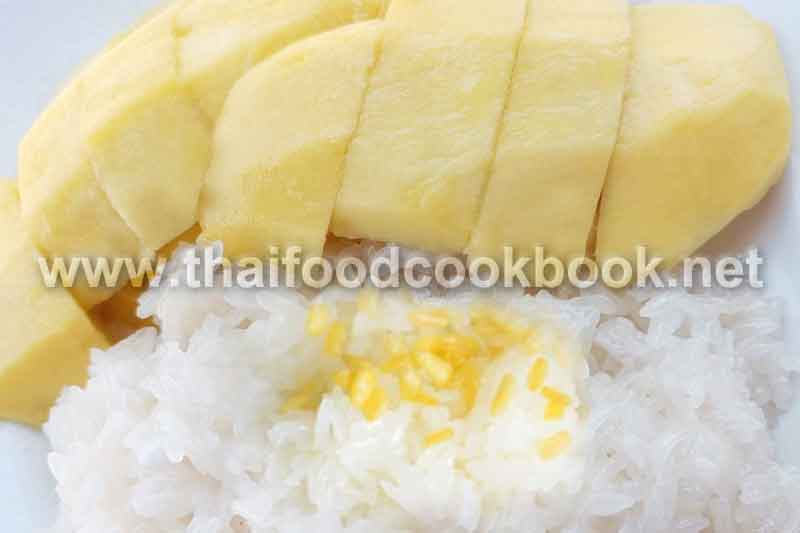Taro in Coconut Milk (Phuak Buad): A Traditional Thai Dessert That Balances Comfort, Culture, and Nourishing Sweetness
Many people who begin exploring Thai desserts are often unsure which traditional recipes are gentle, nourishing, and easy to prepare at home. Some worry about texture, sweetness balance, or the right coconut milk ratio when making Taro in Coconut Milk (Phuak Buad), causing the dish to become too watery, overly sweet, or lacking aroma. The good news is that this dessert is quite forgiving when you know the correct steps, and with a clear recipe, anyone can prepare a soft, aromatic, and authentic version that tastes just like the street food stalls in Thailand. Beyond its delicious flavor, this classic Thai coconut dessert is deeply rooted in local culinary traditions and often served during family gatherings and temple festivals. Learning to cook it properly not only provides comfort through its rich texture but also connects the cook to a deeper sense of Thai food heritage through coconut-based sweets that highlight natural ingredients and simple methods.
This dessert offers a wholesome combination of creamy coconut milk fused with soft cubes of taro that absorb sweetness gently while retaining their natural earthy fragrance. The trick to achieving the perfect result lies in taro selection, coconut milk simmering technique, and timing. Many who prepare this dish for the first time are surprised to learn that the texture of the taro can drastically change based on how it is boiled and rested before combining with the coconut cream mixture. Once prepared correctly, Taro in Coconut Milk (Phuak Buad) becomes not only a delightful sweet treat but also a versatile dessert suited for modern dining tables, home gatherings, and café-style menus.
What Makes Authentic Taro in Coconut Milk (Phuak Buad) Special in Thai Culinary Culture
Traditional Thai coconut-based desserts are cherished for their simplicity and depth of flavor, and this dish perfectly represents that harmony. It is considered a “comfort dessert” in Thailand due to its warm, creamy texture and natural sweetness extracted from yam-like taro tubers simmered in fragrant coconut milk. Unlike heavier desserts, this preparation is rooted in minimalism; just a few ingredients transform into something aromatic and elegant. Cultural cooks also believe that the light floral aroma of pandan and the richness of coconut evoke a sense of well-being and calmness during meals or festive gatherings.
Another key feature that makes this dessert stand out among other Thai sweets is its flexibility: it can be served hot for soothing comfort or chilled for a refreshing taste during summer. Its natural gluten-free composition also makes it suitable for many dietary preferences. The use of steamed taro also highlights one of Thailand’s historical agricultural staples, showcasing how locally grown root vegetables have long been transformed into delicacies through gentle cooking methods and artisanal coconut milk preparation.
Ingredients for Traditional Thai Taro in Coconut Milk (Phuak Buad)
To achieve authentic texture and aroma, fresh ingredients make a remarkable difference. Below is the classic ingredient list:
- 500 g taro (peeled and cut into medium cubes)
- 400 ml thick coconut milk
- 200–250 ml thin coconut milk (for simmering)
- 120 g palm sugar or 100 g white sugar (adjust to taste)
- 1/4 tsp salt (to enhance coconut flavor)
- 2–3 pandan leaves (knotted, optional but traditional)
- 1 cup water for boiling the taro
Many modern cooks also add a small amount of coconut cream toward the end for a thicker topping layer, but that’s optional. What truly matters is simmering the taro gently so that the inside becomes fluffy while the outside stays intact.
Step-by-Step Method: How to Cook Taro in Coconut Milk at Home
The preparation is easy but benefits greatly from patience and order. Follow these steps for perfect Phuak Buad every time:
- Rinse taro after peeling and cutting; soak in salted water briefly to reduce stickiness.
- Boil water in a pot and add taro cubes; simmer on low heat until tender but not falling apart.
- Once soft, remove taro and set aside to cool, letting excess moisture evaporate.
- In another pot, heat thin coconut milk with pandan leaves and salt over low heat.
- Add palm sugar or white sugar and stir gently until fully dissolved.
- Gently fold in the cooked taro cubes and stir lightly so they absorb flavor.
- Finally, add thick coconut milk and continue simmering briefly without boiling too hard; remove pandan leaves before serving.
The final dessert should be thick, silky, aromatic, and comforting without the coconut milk splitting or curdling. If served warm, spoon into small bowls and top with a drizzle of extra coconut cream. If served cold, chill for at least an hour.
Health, Texture, and Serving Variations for a Balanced Coconut Dessert
Traditional Thai home cooks often adjust coconut concentration depending on personal preference. Some prefer a lighter broth-style consistency for easy sipping, while others favor a thick and creamy version similar to pudding. This flexibility is one of the reasons this dessert remains timeless and accessible to different generations. Even modern cafés in Thailand frequently reinvent the presentation by serving it layered in glass cups or topped with toasted sesame seeds or crispy coconut flakes for added aroma.
From a nutritional perspective, taro contains natural fibers, minerals, and energizing carbohydrates. Paired with coconut milk, it becomes both hearty and soothing. Many families prepare it during rainy seasons because of its warming profile, and alternative sweeteners like coconut sugar or low-glycemic syrups can easily be used for lighter versions. For cultural relevance, this dessert also appears during merit offerings and temple feasts, reflecting its gentle symbolism of nourishment and care.
Popular Variations to Customize Taro in Coconut Milk (Phuak Buad)
- Adding sweet potatoes or pumpkin for a colorful mixed root dessert.
- Chilling before serving on crushed ice for a refreshing summer treat.
- Swirling in coconut cream at the end for richer texture.
- Sprinkling toasted sesame seeds or pandan syrup before serving.
Another creative variation includes using purple taro or naturally colored palm sugar for aesthetic appeal. Many home cooks also experiment by pairing this dessert with coconut sticky rice for a festival-style presentation.
Pairing and Presentation Ideas for Dining and Events
Although rustic and traditional, this coconut-based dessert can be styled beautifully for restaurants or small event catering. To elevate presentation, small ceramic bowls or glass cups can be used to highlight the smooth pastel tone of cooked taro. Garnishing with pandan ribbons or strands of coconut flesh offers pleasant visual contrast. For readers seeking expanded cultural culinary context, a helpful reference guide can be found at Thai taro dessert resources that document traditional ingredients and preparation methods linked to Southeast Asian foodways.
This timeless sweet dish adapts remarkably well to tasting menus or café menus, especially when served with jasmine tea or freshly brewed pandan water. In cooler seasons, serving it warm emphasizes mouthfeel and creaminess; in warmer climates, chilling it creates a refreshing pudding-like treat that feels both nostalgic and modern.
Summary and Key Takeaways for Perfect Phuak Buad
Taro in Coconut Milk (Phuak Buad) combines comfort, cultural depth, and culinary elegance in a single bowl. Preparing it at home requires only a handful of natural ingredients, yet its flavor becomes extraordinary when simmered slowly and thoughtfully. By selecting quality taro, simmering gently, and balancing sweetness with creamy coconut richness, anyone can master this traditional Thai dessert with confidence. Whether served hot or cold, it remains a beloved, wholesome classic that continues to represent the gentle sweetness of Thai culinary heritage.

